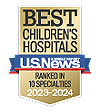A comprehensive new study of premature babies in the United States is helping to redefine what it means for a premature infant to survive.
The study looked at 10,877 babies born between 2013 and 2018 and found a significant improvement in survival of those born between 22 and 28 weeks, compared to the past. Some 78% were rescued, compared to 76% of those born between 2008 and 2012. Two percent may not sound like much but it translates into many hundreds of infants saved each year.
This study showed that even those delivered at 22 weeks — 18 weeks early — had a chance of living. With active treatment, about 28% of them survived; among those born at 23 weeks, 55% survived. “When I was in residency in the mid-1980s, babies born at 500 grams [about 1.1 pounds] and 25 weeks didn’t survive; it just didn’t happen. Now we see the borderline of viability dropping to 22 weeks,” said neonatologist Krisa Van Meurs, MD, a Stanford Medicine emerita professor of pediatrics and a co-author on the study. “With all of these new treatment strategies we’ve developed, we’ve seen an amazing impact.”
This analysis shows infants even at the lowest gestational ages — 22 and 23 weeks — might live if they are actively resuscitated, said Susan Hintz, MD, professor of pediatrics and a co-author on the paper. “There has been a shift toward considering a more active initial treatment in prenatal discussions with families over the past several years in light of increasing data to support this approach,” she said.
This study appeared Jan. 18 in the Journal of the American Medical Association.
Tracking babies
The researchers studied the neurosensory, developmental and functional progress of babies born at 22-26 weeks of gestation, conducting evaluations when the children were 2 years old. Overall, about half had mild or no signs of neurodevelopmental problems, while 29% had moderate disabilities. About 21% of the children had severe impairments, including approximately 1.5% with blindness and 2.5% with severe hearing loss. Some 15% of the children used a mobility aid such as an orthotic, brace or walker, while 8% had moderate to severe cerebral palsy. About half had been re-hospitalized after being discharged from the neonatal intensive care unit.
“It is encouraging that half of the children had no or minimal neurodevelopmental impairments at 2 years. But moderate to severe neurodevelopmental challenges are not uncommon in this group, particularly for those born at the lowest gestational ages,” said Hintz. “We also explored other important outcomes, like feeding challenges and equipment and medication needs, which inform complex care preparations and counseling.”
Improving outcomes
In the past 20 to 30 years, researchers have discovered myriad approaches to improve the survival and care of premature infants, Van Meurs said. That includes using surfactant, a mix of protein and fat that aids lung development, as well as steroids in pregnant mothers, which helps the baby’s lungs and other organs mature and minimizes the risk of breathing problems, bleeding in the brain and other complications, she said.
Clinicians also have enhanced the environment in which preterm infants are treated, creating a womb-like atmosphere with low lighting, and minimal noise and disruption. They are also using CPAP devices, which help keep the airways open and are a gentler way of supporting breathing, instead of using ventilators, which can damage the lungs, Van Meurs said.
Parents are also being included in the treatment process—it’s been shown that regular parental touch and especially skin-to-skin “kangaroo care” can increase weight gain, decrease the chance of sepsis—a severe blood infection—and improve survival and neurodevelopment, she said.
Van Meurs said Stanford uses innovative neuromonitoring devices to monitor brain activity and oxygen levels in the brains of fragile newborns to minimize brain injury in the neonatal intensive care unit. “That’s the focus for the next decade—how can we protect the brain and improve outcomes for these children,” she said.
According to Hintz, investigators in the National Institute for Child Health and Human Development Neonatal Research Network, a group of 18 academic medical centers funded by the institute, are continuing to follow some of the children born extremely preterm through 5-7 years of age. “At an early school age, we can better understand abilities and challenges over a range of more detailed neurologic and cognitive skills, behavioral and social interactions and functional outcomes,” said Hintz, who is the lead investigator for the research network’s follow-up activities.
Continuing care at home
With the increasing probability of survival for extraordinarily preterm infants, Hintz said, more emphasis needs to be placed on life beyond the hospital.
“We need to shift our focus from the NICU hospitalization to far beyond that period, investing in parents and the family, launching interventions and support strategies to improve outcomes that are important to families,” Hintz said. “We have made enormous strides and are doing amazing things for children in the NICU. Now it’s time for us to take a truly life-course view—listening to families, integrating the concerns and outcomes important to them in research and quality improvement efforts. This is how we will help families and children to live their best lives.”
Authors
- Ruthann Richter
- more by this author...


 Previous
Previous







